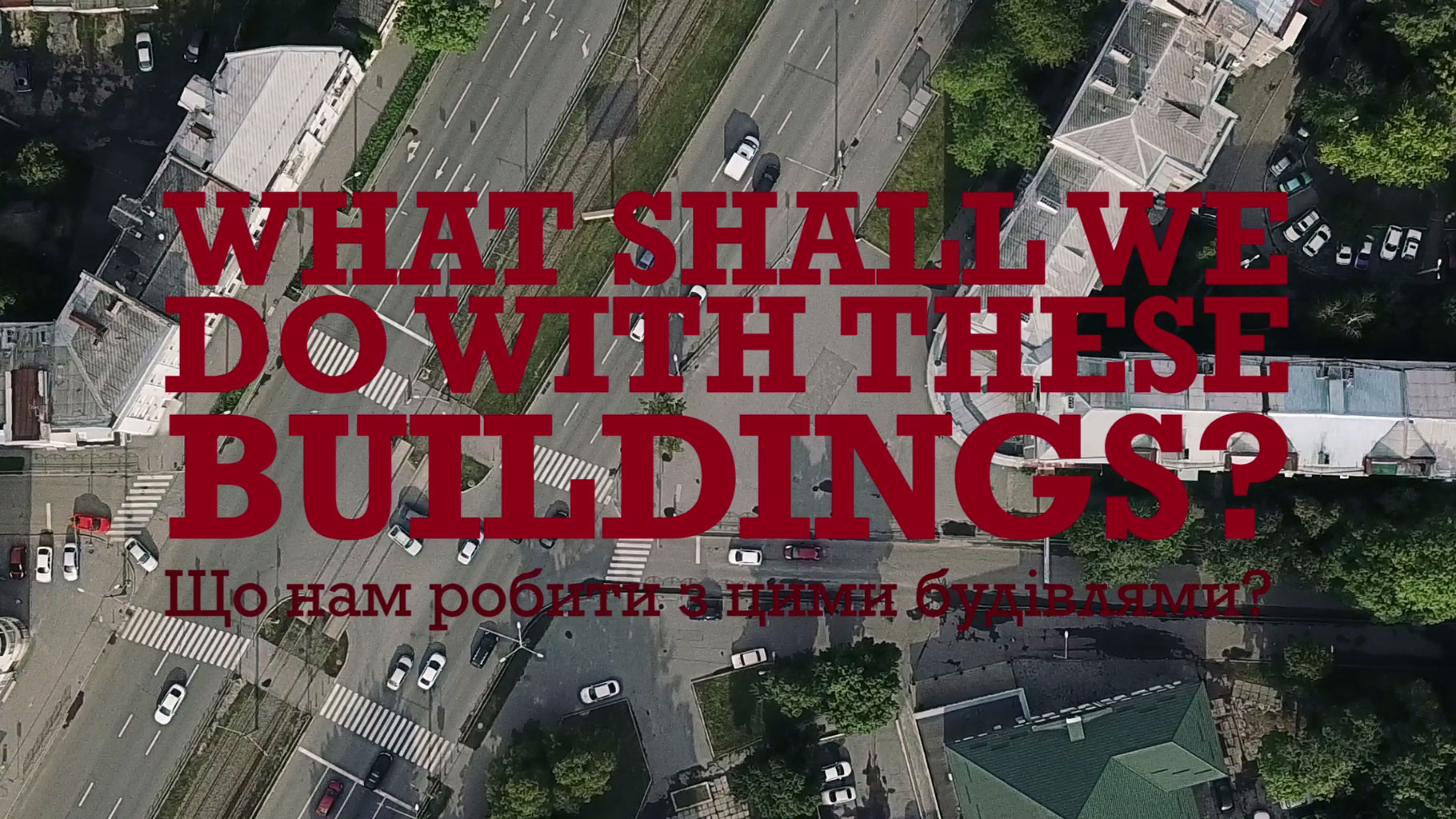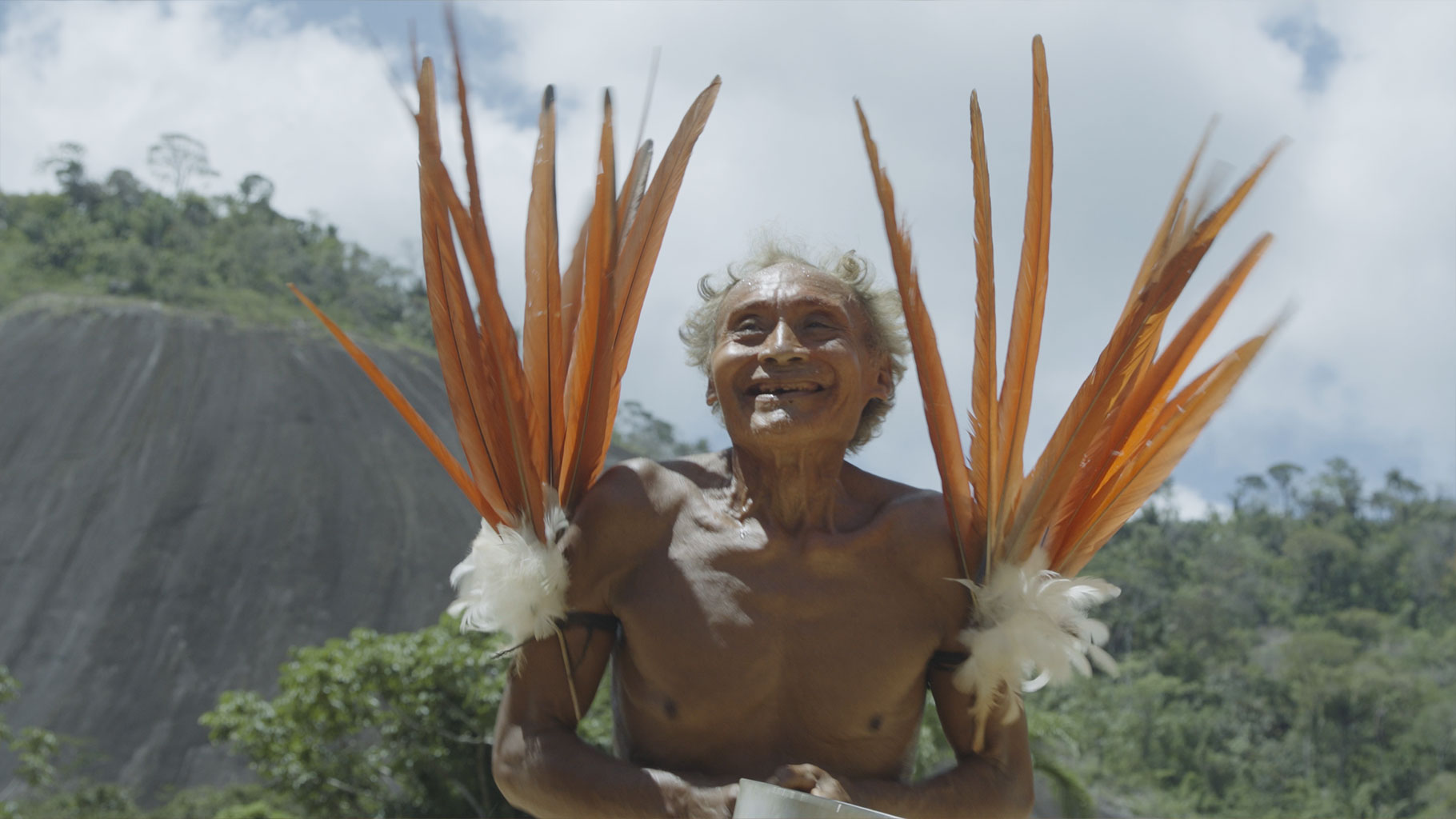

Director Jonathan Ben-Shaul, a British movement and theater director, crafted the film during a two-month residency at the Kharkiv Literary Museum.
“It’s about exploring the living relationship that we have with structures like this,” he explains. “In putting the body in that space and exploring the tensions and the oppositions that that architecture offers, it gives us a more holistic language to approach architecture … Our relationship with buildings is one that is interactive and constantly changing.”
Shot in September 2021 — just a few months before Russia launched a full-scale invasion of Ukraine — the film eerily captures simmering divides between Russians and Ukrainians in Kharkiv. Their fights seize upon seemingly “symbolic” issues arpund language, plaques, and architecture. Yet the film makes clear that such issues are actually a proxy fight for the question of who gets to decide Ukraine’s future.



What Shall We Do…? uses five buildings as case studies to understand how a Soviet past haunts Kharkiv. Architects and ordinary citizens first explain a building’s significance; dancers then bust open those explanations via movement. But there are startling breaks from this formula, too, as when passersby begin inserting themselves into the scenes. Like rings of a tree, buildings contain layers of Ukraine’s history — one marred with successive invasions from outside empires. One architect points to the artificiality of Soviet symbols tacked on to structures dating back to the Russian empire.
The film documents resistance to such Russian influence, ranging from the organized to the anarchic. One expertly edited montage syncs heavy dubstep with the toppling of Soviet statues. Other monuments have been reclaimed; the brutalist Kharkiv Opera House, built in 1991, has since become a haven for skateboarders and techno-ravers.
The film’s dance sequences uncover the emotional underbelly of these buildings. One of the film’s two dancers and co-producers, Mykola Naboka, explains that Ben-Shaul would instruct him to walk around the buildings to get a sense of their dynamics, then quickly make a charcoal sketch. Inspired by those drawings, Naboka crafted dance sequences that toe the line between abstraction and acting, with elements of mime and vaudeville.



Another sequence is inspired by the 1928-built Dherzprom (Держпром), a giant gray dollhouse of a building that dominates Kharkiv’s central square. While considered an architectural jewel, it’s also faintly oppressive, notes one interviewee. To Naboka, it felt as though the building’s many blocks were springing out of the ground. As he and his partner dance, an imaginary force field on the ground seems to send them flying backwards.
Naboka’s education at the School Jacques Lecoq in Paris, which he attended alongside Ben-Shaul, gave him the tools to deconstruct these ideas.
“[The building is] just a structure with certain lines, with certain emphasis, with certain equilibrium or disequilibrium, with certain push and pull in it … So I can’t really say that I was reacting or responding to the building,” Naboka explains. “I would rather say that I was responding to this 3-D model which presents itself in space, and then just playing around with this form and trying to respond to the dynamics that are within it.”
The film’s frenetic editing only adds to the surrealism of this sequence. As the Dherzprom expands, metastasizing and overtaking the sky, it presses down on the dancers. At times, it becomes see-through, but another version of the Dherzprom always pops up. In other scenes, the buildings refract into infinite versions of themselves, like Matryoshka dolls. Sometimes even the dancers multiply.
“In order to keep a building sense of play — a [sense of] scale, if you will — we felt there should be increasingly more playful effects throughout the film,” says Ben-Shaul. “There was this idea of the building being almost infinite, having this unbelievable maze of corridors. And so to demonstrate that, we thought it would be fun to replace the sky with even more Dherzprom.”
The Dherzprom sequence exemplifies this mounting experimentation. Ben-Shaul and his editor came up with these trippy, destabilizing sequences under a severe time crunch. They edited together the interviews and dance sequences in only three days before the premiere of the film.
“I think probably a lot of the inspiration for the wilder edits came from the fact that we were exhausted, and it was in the middle of the night,” laughs Ben-Shaul.
What Shall We Do…? approaches its subject with whimsy, but it never forgets how high the stakes are. Visceral, on-the-ground confrontations, which were unplanned and unscripted, capture the city’s edginess. In two separate moments, anonymous passerbyers — not authority figures, not police officers — demand that the crew stop filming.
In the film, as the activist Vadym Pozdniakov explains his efforts to remove a seemingly sledgehammer-proof Leninist plaque, a man needles him with accusatory questions. When he insists Vadym speak in Russian, their argument escalates. For the crew, it was an intense moment.
“Some of those interactions were more aggressive than you see in the film,” says Ben-Shaul. “Once the cameras stopped rolling with the man in front of the plaque, a car pulled up, and he had some big guys who sort of chased us off. It was clearly quite tense, not just because of the resonances that architecture had in Kharkiv at the time. But also because Vadym himself is a bit of a polarizing figure, especially within that community.”




“This situation is actually one of the million which represents the level of tension in which people in Kharkiv were living,” says Naboka, who believes these simmering debates about Ukrainian identity foreshadowed Russia’s invasion. “Drawing a parallel with nowadays, when we have this full-scale invasion — you can feel that in the air 5, 10 years before it happened, by these little tiny signals that would just bring up the question of, ‘Okay, which plaques should we have on the streets: Ukrainian ones or Russian ones or Soviet ones? Okay, but which language should we speak?'”
“There was a constant confrontation of two parts, pro-Russian and pro-Ukrainian, which kept fighting for Kharkiv and for eastern Ukraine,” Naboka concludes.
In the two years since the film was shot, most of its cast and crew have left Kharkiv, as the city has borne the brunt of Russian shelling and missiles. Many of the buildings featured in the film have been heavily damaged. Proceeds from the film are being donated to the group Evacuate Kharkiv, whose 200-member team includes Igor Klyuchnik, Naboka’s dance partner.
As the world bears witness to Russian atrocities, What Shall We Do…? reminds us of Kharkiv’s cultural vitality, its indomitable spirit, its legacy of resistance.
Reflecting on the questions around identity and national pride raised by the film, Naboka says, “These kinds of questions weren’t just cultural discussions … These questions were deciding the future of your generation and your kids’ generation.”






